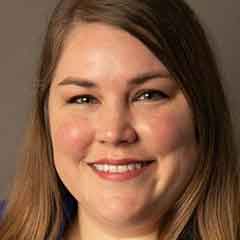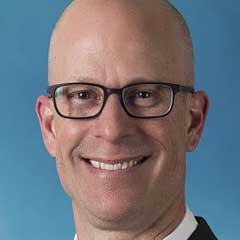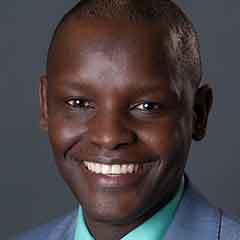Day 2 — Monday, July 15
All times are Mountain Daylight Time.
Display Preferences
Hide/Show
7:00 a.m.–8:00 a.m. | Superior Terrace | General
Attendee Breakfast
8:10 a.m.–9:10 a.m. | Ballroom 1–3 | Education
The Jimmy Young Memorial Lecture
The Boundary Around Legitimate Examination Preparation
Kellie Carrol MPA, RRT, RRT-NPS, AE-C, C-ELBW
Robert Shaw PhD, RRT, FAARC
Lori Tinkler MBA, ICE-CCP
Show description



A natural tension exists within the education of students seeking to become effective respiratory therapists when those students undergo independent, standardized assessments. The NBRC expects each person to uphold professional integrity whether one is educating students, preparing students/graduates for an examination, interacting with a recent graduate as a classmate or coworker, or reflecting on recently taking an examination. The purpose of this session is to describe potential consequences of behaving in ways judged to be out-of-line by the NBRC and its actions regarding examination security.
9:20 a.m.–10:00 a.m. | Primrose | Leadership & Management
Clinical Practice Guideline (CPG) to Protocol — How to Translate a CPG into Practice
Lynda Goodfellow EdD, RRT, FAARC
Show description

Recommendations from CPGs can be a daunting task for clinicians at the bedside. This session will discuss the implementation process that can lead to protocols and care pathways that impact ventilator liberation, hospital lengths of stay, and other outcomes.
9:20 a.m.–10:00 a.m. | Ballroom 1–3 | Education
Where are You Finding Your Students?
Robert Brent Murray MS, RRT
Show description

Explore the multifaceted recruitment strategies of an urban RT program, spanning on-campus initiatives and off-campus partnerships. Discover the correlation between student evaluation criteria, completion rates, and success in NBRC exams for a comprehensive understanding of student recruitment and assessment.
10:00 a.m.–11:00 a.m. | Ballroom Lobby | General
Exhibitor Break
11:00 a.m.–11:40 a.m. | Primrose | Leadership & Management
Building a Culture of Safety
Caitlyn Coppock RRT, RRT-ACCS
Show description

In today’s healthcare landscape, ensuring a culture of safety is paramount, especially within respiratory departments where patients often face critical conditions. This session delves into the strategies and methodologies for establishing and nurturing a culture of safety within respiratory departments. From leveraging technology to fostering effective communication and teamwork, participants will explore practical approaches to enhance patient safety, reduce errors, and improve overall quality of care.
11:00 a.m.–12:30 p.m.
Symposium
Building the Educator Pipeline
11:00 a.m.–11:40 a.m. | Ballroom 1–3 | Education
Unlocking Excellence: The Mentee’s Guide to Building an Epic Mentorship
Linda Nozart MPH, BSRC, RRT, AE-C
Show description

Discover the art of identifying the right mentor and learn actionable steps a mentee can take to shape this pivotal relationship. From cultivating effective communication to leveraging mentorship for career advancement, delve into practical strategies that empower early career respiratory therapists to navigate the complexities of their profession with confidence. Join us for an engaging session where mentorship becomes the catalyst for unlocking your full professional potential.
11:50 a.m.–12:30 p.m. | Ballroom 1–3 | Education
Mentoring Mindset: Mentorship in Respiratory Care Education
Kally Eddison, MSHA, RRT, RRT-ACCS
Tonya Piehl MEd, RRT, RRT-NPS, RPFT
Show description


Greater than 60% of the current program directors are expected to turn over in a decade and their directors of clinical education expected to remain only 4–5 years after their departure, leading to a national shortage of experienced educational leadership in respiratory care. Accredited RC programs are the bedrock of our profession and if not maintained, the entire profession will be weakened. It is critical for the educational community to mentor those advancing into these educational leadership positions.
11:50 a.m.–12:30 p.m. | Leadership & Management | Primrose
The Utilization of Artificial Intelligence to Improve Workflow Efficiency
Christopher Whelchel MHA, RRT, RRT-ACCS, RRT-NPS
Show description

This presentation will demonstrate how artificial intelligence (AI) can revolutionize healthcare workflows, with a focus on enhancing patient care efficiency. Attendees will discover AI-driven automation tools that streamline administrative tasks, allowing healthcare professionals to prioritize direct patient interaction. Through case studies and examples, the presenter will showcase how AI algorithms expedite patient diagnosis and treatment decisions, ultimately improving care quality and outcomes.
12:30 p.m.–2:00 p.m. | Superior Terrace | General
New!
Attendee Networking Lunch
2:00 p.m.–2:30 p.m. | Primrose | General
Leadership & Management Section Meeting
Joel Brown, MSM-HCA, RRT, FAARC, FNAP, CEC
2:00 p.m.–2:40 p.m. | Ballroom 1–3 | Education
Building Our Future
Teri Miller MEd, RRT, CPFT, FAARC
Show description

At a time when our profession is growing leaps and bounds in opportunity, we face a growing workforce shortage. We must vigorously recruit our future workforce while retaining our best and brightest and meet current workforce needs — a challenge which will require a united effort of all. This presentation will explore the challenges we face, share current initiatives in workforce recovery, and identify ways respiratory care leaders may collaborate to forge a brighter future.
2:35 p.m.–3:15 p.m. | Primrose | Leadership & Management
The Role of Diversity, Equity and Inclusion Programs in Healthcare
Lenny Nyangwara MSM, RRT, FAARC
Show description

Diversity, Equity, and Inclusion (DEI) in healthcare encompasses efforts and initiatives to ensure all individuals, regardless of race, ethnicity, gender, sexual orientation, socio-economic status, or other factors, have equitable access to healthcare and are treated fairly and respectfully. DEI is a critical component of healthcare because it can profoundly impact patient outcomes, healthcare delivery, and workforce diversity. DEI training provides attendees benefits that include better communication, empowerment, awareness about the challenges of others, increased cultural competency, and empathy.
2:45 p.m. – 3:15 p.m. | Ballroom 1–3 | Education
Education Section Meeting
Jennifer Anderson EdD, RRT, RRT-NPS
3:15 p.m.–3:35 p.m. | Ballroom Lobby | General
Networking Break
3:35 p.m.–4:15 p.m. | Ballroom 1–3 | Education
It’s Critical — How to Teach Thinking
Ellen Becker PhD, RRT, RPFT, AE-C, FAARC
Show description

All educators can teach facts related to clinical practice. However, teaching others to select, organize, and integrate clinical information poses a much larger challenge. This presentation summarizes the cognitive science literature for teaching meaningful (critical) thinking in clinical and classroom settings.
3:35 p.m.–4:15 p.m. | Primrose | Leadership & Management
Boyles Law Application to Management and Leadership
Gbolahan Harris RRT, RRT-NPS, RRT-SDS
Show description

Boyles Law may seem unrelated to leadership and management, but its principles hold valuable insights for leaders. By understanding the concepts of pressure, volume, temperature, and the gas law equation, leaders can apply these principles metaphorically to their roles. Setting realistic expectations, encouraging open communication, practicing emotionally intelligent leadership, balancing leadership styles, and embracing adaptability are all essential aspects of effective leadership and management.
There are no sessions that match your display preferences.
